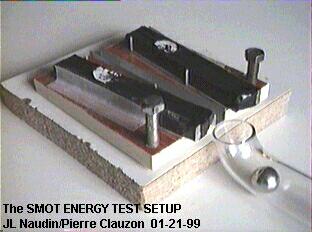
The SMOT ENERGY
EFFICIENCY and GAIN
created on 01-21-99 - JLN Labs - last update on 04-23-05

The SMOT ENERGY
EFFICIENCY
and GAIN
created on 01-21-99 - JLN Labs
- last update on 04-23-05
You will find in this document some measurements about
the SMOT Energy gain and its efficiency.
This serie of tests has been done with an enhanced version of my
SMOT v1.01. A special testing setup has been built by Professor
Pierre Clauzon and his team. A special curved tube made of glass
has been specially designed for "catching" the ball at
the drop zone. The tube has a 2.815° climbing slope, 20mm diam
and a base length of 610mm. The apparatus has been placed on a
horizontal base (checked with a spirit level).
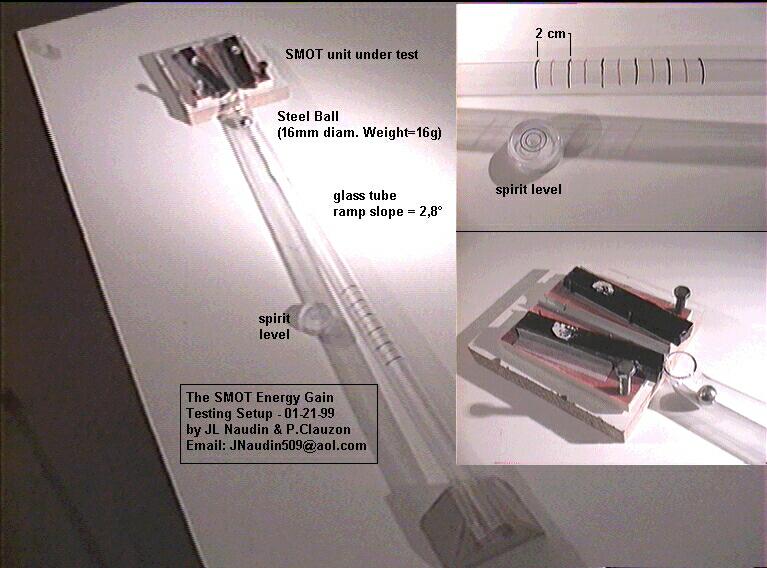
Test Results :
The purpose of this test is to measure the potential energy of the steel ball droping from the exit of SMOT and to compare this energy to the initial energy at the input. The initial energy is the energy before the climb of the ball through the magnetic ramp ( because the initial height is not zero at the starting position ).


TEST 1 - Drop from the INPUT
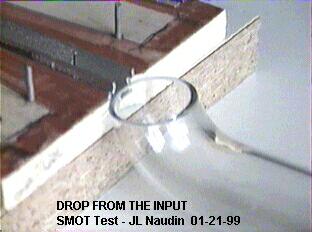
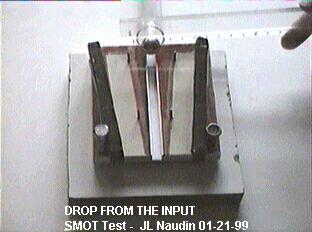
The ball has been droped from the INPUT of the SMOT ramp without initial kinetic energy. The potential energy measured after the run of the ball through the glass tube was 3.186 mJ.
TEST 2 - Drop from the OUTPUT
The second measurement has been done with the SMOT device in the normal configuration; the glass tube has been placed at the OUTPUT of the ramp.
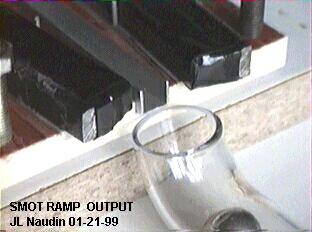
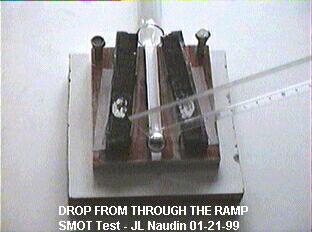
The ball has been placed at the input of the SMOT without initial kinetic energy and after a normal run, the ball has droped at OUTPUT of the SMOT ramp . The potential energy measured after the run of the ball through the glass tube was 3.610 mJ.
The differential length between the test 1 and the test 2 measured on the glass tube was 55mm.
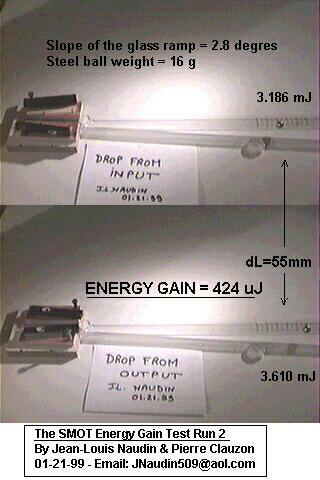
EFFICIENCY AND ENERGY GAIN
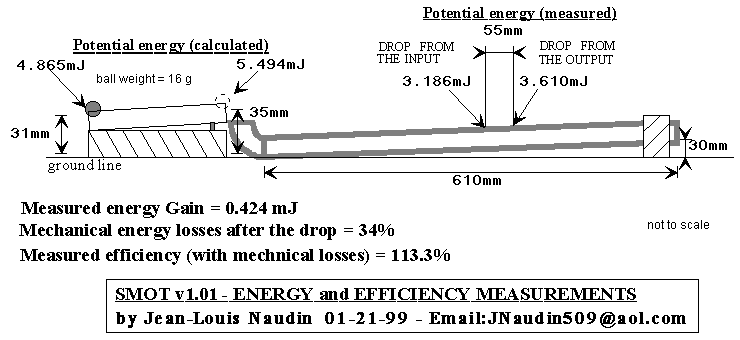
The angle of the slope was 2.815 degree with a dL= 55 mm, the differential height was :
dh = 55 mm * sin ( 2.815 ) = 2.70 mm
The mass of the steel ball was 16 grammes, so the ENERGY GAIN was :
dE = 0.016 * 9.81 * 2.70 = 0.424 mJ
ENERGY GAIN : dE = 0.424 mJ
The EFFICIENCY of the SMOT v1.01 was :
Eff(%) = ( Energy Output / Energy Input )*100 = (3.610/3.186)*100
EFFICIENCY : Eff(%) = 113.3%
Comments
: The measured efficiency of my SMOT
is 113.3%... BUT the mechanical losses AFTER the drop of the ball
is about 34%... So this explain why the closed loop is not yet
obtained. So this is not due to the principle of the device, but
only due to the actual means used for catching the output energy
( the glass tube ). This is only a mechanical design problem...
The way is now (again) opened.
click here to see the SMOT Test run (216kb)
( if you don't have the RealPlayer 5.0, you may download it freely at : http://www.real.com/products/player/ )
SMOT Energy measurements HQ video
( 30 FPS / DivX codec is required )
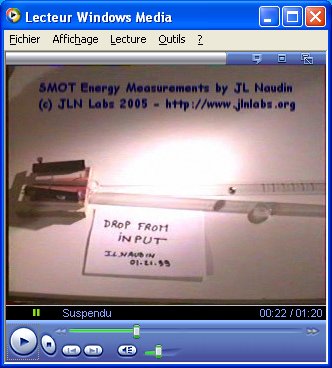
Click on
the picture to download the file ( 14.3 Mb )
If you need more informations or if you have any suggestions send me your Feedback
![]() Email
: JNaudin509@aol.com
Email
: JNaudin509@aol.com
Return to the SMOT home page